Full leg AI segmentation using CNN
Automated muscle segmentation
Within QMRITools there is a function called SegmentData which is part of Segmentationtools, this function allows to automaticly segment lower extremity muscles of the hip, thigh and leg. The function is based on 4 neural nets, two that recognize the side and location, and two that perform the muscle segmenataion, as is shown in the flowchart below.
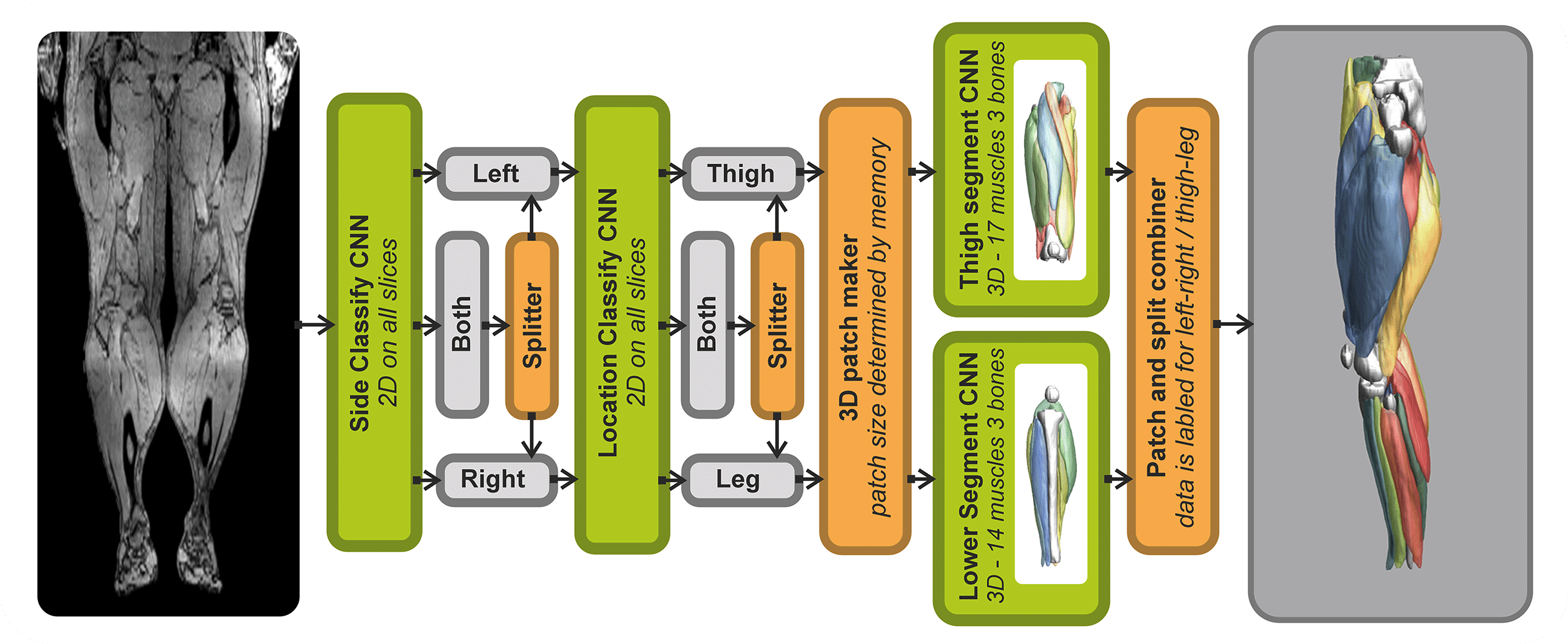
The network is trained on 20 manually segmented thigh and leg datasets. It currently only works on out-phase gradient echo images, which can either be acquired or reconsturcted using dixon based methods. The implementation allows for any size data and works best is the data has a inplane resolution of 1-2.5 mm and a slice thinkness of 5-10 mm. The latest version of the trained networks are availible in the QMRItools package as .wlnet files. Upon request *.ONNX files are also availible. An example of a fully segmented leg dataset is shown below.
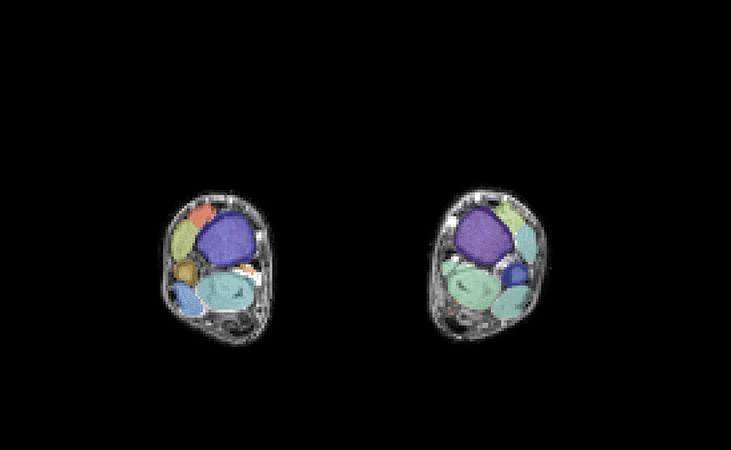
Architecture and training
The segmentation networks are based on the UNET architectrue with ResNet convolution blocks that contain short skip connections. Below are the block diagrams of the encoding and decoding blocks used in our unet architecture.

For training the data is heavily augmented using: scale, skew, rotation, translation, noise, sharpen, contrast and and brightness. Training is done with a batch size of 2 and a patch size of 32x112x112 voxels and 256 datasets are seen per epoch. Patches are selected after data augmentation. Below are two examples of the first 100 epochs for the upper and lower leg. Training is typically continued for 200-300 epochs (8-12 hours). The resulting segmentation of both neworks is shown below.
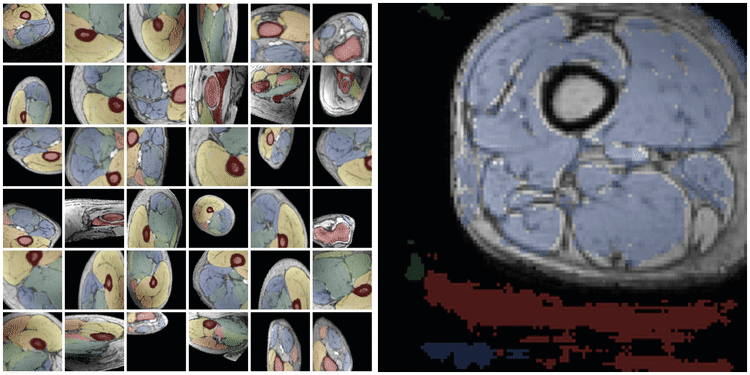
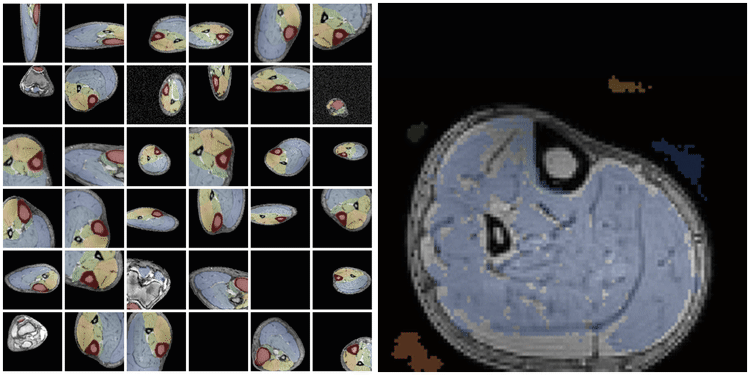
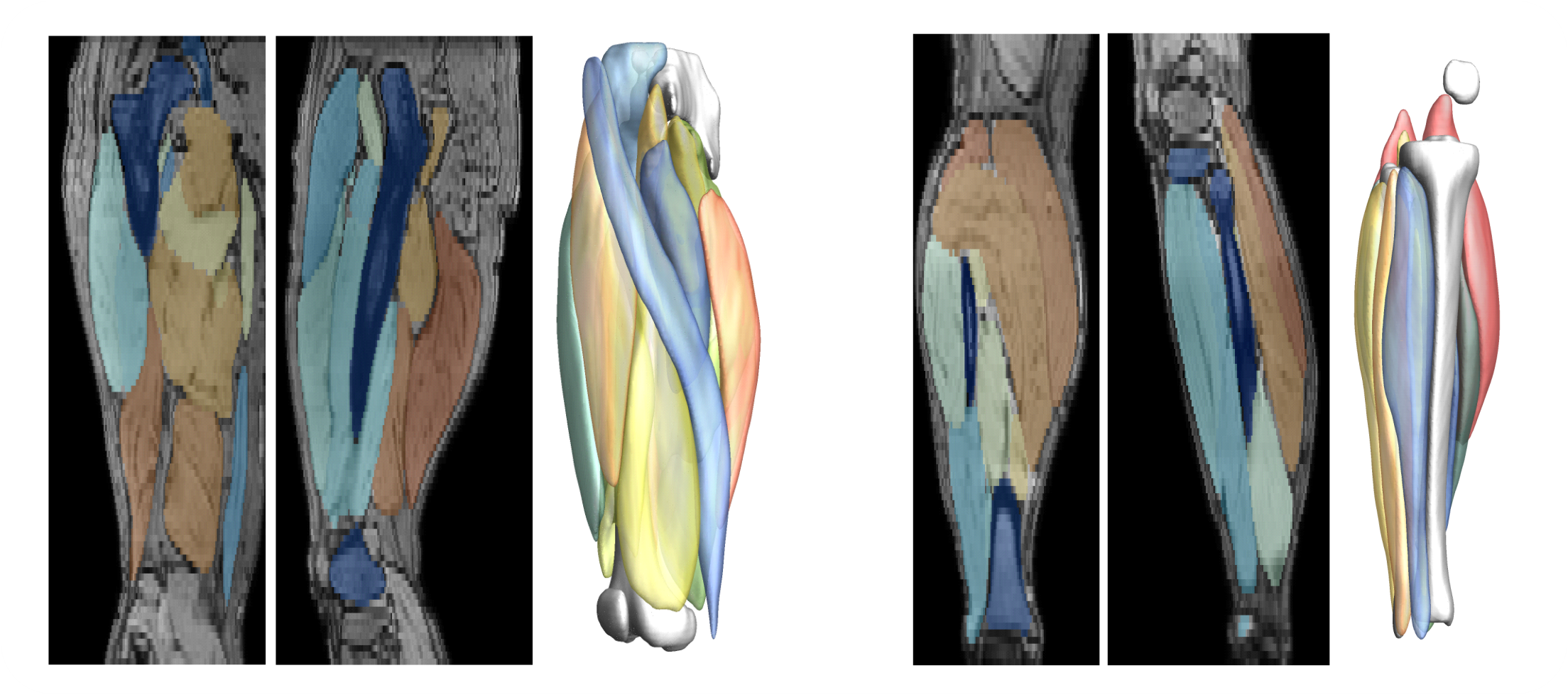
Features include
- Automated region recognition
- Memory optimized segmentation
- CPU and GPU support
- Automated patching and merging
- Standardized muscle labels